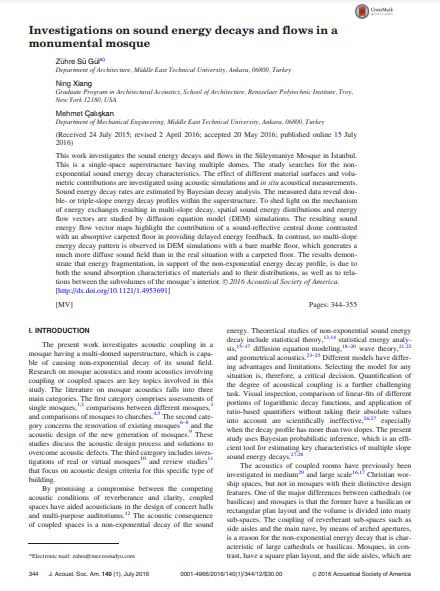
Sü Gül, Zühre, Ning Xiang, and Mehmet Çalışkan. “Investigations on sound energy decays and flows in a monumental mosque.” The Journal of the Acoustical Society of America 140, no. 1 (2016): 344-355.
I agree to the terms outlined below:
You agree to upload and assign Mosqpedia Database the rights to use the content worldwide and in perpetuity across all current and future media platforms. Mosqpedia Database may edit, copy, adapt and translate your contribution.
The content will be distributed under the Creative Commons Attribution-Deed – Attribution-NonCommercial-NoDerivatives 4.0 International – Creative Commons
All data will be stored in line with data protection regulations.